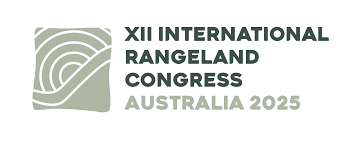Ver ítem
- xmlui.general.dspace_homeCentros e Institutos de InvestigaciónCIPAF. Centro de Investigación y Desarrollo Tecnológico para la Agricultura FamiliarIPAF CuyoPresentaciones a Congresosxmlui.ArtifactBrowser.ItemViewer.trail
- Inicio
- Centros e Institutos de Investigación
- CIPAF. Centro de Investigación y Desarrollo Tecnológico para la Agricultura Familiar
- IPAF Cuyo
- Presentaciones a Congresos
- Ver ítem
International cooperation to improve forage supply in grasslands in Kenya and Tanzania
Resumen
Grasslands and savannas cover a significant area of the earth and are home to much biodiversity and livestock, including cows, goats, sheep, and other animals. Livestock production in these ecosystems is characterized by a low supply of forage mainly due to advanced erosion processes, overgrazing, shrub invasion, lack of availability of quality grass seeds and the concomitant decline of palatable species. The purpose of this paper is to
[ver mas...]
Grasslands and savannas cover a significant area of the earth and are home to much biodiversity and livestock, including cows, goats, sheep, and other animals. Livestock production in these ecosystems is characterized by a low supply of forage mainly due to advanced erosion processes, overgrazing, shrub invasion, lack of availability of quality grass seeds and the concomitant decline of palatable species. The purpose of this paper is to describe the exchanges and highlight the potential for collaboration for the construction of knowledge, in science and technology, focused on livestock production in the arid and semi-arid zones (ASALs) of Kenya and Tanzania. Between 2017 and 2022, a bilateral technical cooperation project promoted by the Argentine Fund for International Cooperation (FO.AR) was carried out called: "Improvement of livestock production in arid and semi-arid areas of Kenya". The activities of this project focused on the participatory identification of the main constraints affecting smallholder livestock production. The project involved Kenyan researchers, extension workers, national and county government livestock officials, and livestock producers. Since 2020, different Tanzanian institutions (Ministries) have resumed their relationships with Argentine cooperation agencies to participate in several training proposals to improve the supply of forage for livestock systems in Kenya and Tanzania. During the project, six missions were carried out, four from Argentina to Kenya and two from Kenya to Argentina, in addition to participatory workshops for the identification of constraints and proposals for strategies to address these constraints. The German government, which has a presence in the two African countries, had shown interest in these activities and in 2022 a new project was approved: "Strengthening capacity building to improve smallholder farming livestock systems and contribute to agri-food sustainability in Kenya and Tanzania". This project is financed by Germany and is executed by the following institutions: Kenyan Ministry of Agriculture, Livestock, Fisheries and Cooperatives, Tanzania Ministry of Livestock and Fisheries, Argentine Agency for International Cooperation and White Helmets Humanitarian Assistance (National Directorate of International Cooperation), Ministry of Foreign Affairs, International Trade and Worship; Ministry of Agriculture, Livestock and Fisheries; the National Institute of Agricultural Technology (INTA), the Tanzania Livestock Research Institute (TALIRI) and the Kenya Agriculture and Livestock Research Organization (KALRO) and livestock producer organizations at provincial and/or municipal (county) levels.
[Cerrar]

Autor
Guzman, Fernando Diego;
Ledesma, Roxana Ramona;
Alberghini, Juan Pablo;
Nenkari, H.;
Sangula, A.;
Okore, C.;
Kidake, B.;
Fuente
Proceedings of the 12 th International Rangeland Congress, Adelaide, Australia, June 2-6, 2025
Fecha
2025-06-02
Editorial
International Rangeland Congress Continuing Committee
Formato
pdf
Tipo de documento
documento de conferencia
Palabras Claves
Derechos de acceso
Abierto
 Excepto donde se diga explicitamente, este item se publica bajo la siguiente descripción: Creative Commons Attribution-NonCommercial-ShareAlike 2.5 Unported (CC BY-NC-SA 2.5)
Excepto donde se diga explicitamente, este item se publica bajo la siguiente descripción: Creative Commons Attribution-NonCommercial-ShareAlike 2.5 Unported (CC BY-NC-SA 2.5)


